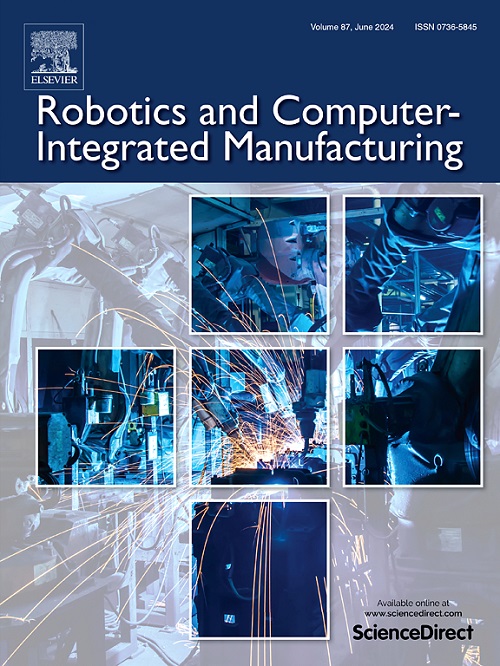用自然语言模型改造工业机器人:最新进展与未来展望
IF 11.4
1区 计算机科学
Q1 COMPUTER SCIENCE, INTERDISCIPLINARY APPLICATIONS
引用次数: 0
摘要
将自然语言模型(NLMs)集成到工业机器人中可以提高操作效率和直观的人机交互,因此它代表了追求工业4.0/5.0的重要机会。本文对该领域的技术进步和应用进行了全面的综述,强调了它们在提高工业环境中的任务执行、认知能力和通信方面的作用。同时,对相关挑战进行了分析和讨论。特别是,nlm固有地与上下文理解斗争,这可能导致在复杂的工业环境中不适当或不切实际的输出。此外,外部噪声和对实时响应的需求对nlm的有效性提出了进一步的并发症。对安全性、透明度、隐私性和道德使用的担忧放大了对监管考虑的需求。此外,需要标准化的方法来解释模糊的人类指令,以改善人与机器人之间的互动。研究指出,非语言性管理的更广泛影响可以从工业环境扩展到商业和社会环境,从而提高服务质量和客户互动。因此,该综述有望为如何有效地将nlm与机器人系统集成提供见解,刺激研究以解决剩余的挑战,并提高透明度以提高社会可接受性。本文章由计算机程序翻译,如有差异,请以英文原文为准。
Transformation of industrial robotics with natural language models: Recent progress and future prospects
Integration of Natural Language Models (NLMs) into industrial robots enhances operational efficiency and intuitive human-robot interactions, and thus it represents a significant opportunity in the pursuit of Industry 4.0/5.0. This paper provides a comprehensive survey on the technological advancements and applications in this area, by emphasizing their role in improving task execution, cognitive capabilities, and communication in the industrial environments. Meanwhile, related challenges are analyzed and discussed. In particular, NLMs inherently struggle with contextual understanding, which can lead to inappropriate or impractical outputs in complex industrial environments. Also, the external noise and the need for real-time responsiveness present further complications to the effectiveness of NLMs. Concerns regarding safety, transparency, privacy, and ethical usage amplify the need for regulatory considerations. In addition, standardized approaches to interpreting vague human instructions are called for to improve the interaction between humans and robots. It is pointed out that the broader impacts of NLMs can extend beyond industrial environments into commercial and social settings, thereby enhancing service quality and customer interactions. As a result, the review is expected to provide insights on how to effectively integrate NLMs with robotic systems, stimulate research to address the remaining challenges, and enhance transparency to improve social acceptability.
求助全文
通过发布文献求助,成功后即可免费获取论文全文。
去求助
来源期刊
CiteScore
24.10
自引率
13.50%
发文量
160
审稿时长
50 days
期刊介绍:
The journal, Robotics and Computer-Integrated Manufacturing, focuses on sharing research applications that contribute to the development of new or enhanced robotics, manufacturing technologies, and innovative manufacturing strategies that are relevant to industry. Papers that combine theory and experimental validation are preferred, while review papers on current robotics and manufacturing issues are also considered. However, papers on traditional machining processes, modeling and simulation, supply chain management, and resource optimization are generally not within the scope of the journal, as there are more appropriate journals for these topics. Similarly, papers that are overly theoretical or mathematical will be directed to other suitable journals. The journal welcomes original papers in areas such as industrial robotics, human-robot collaboration in manufacturing, cloud-based manufacturing, cyber-physical production systems, big data analytics in manufacturing, smart mechatronics, machine learning, adaptive and sustainable manufacturing, and other fields involving unique manufacturing technologies.

 求助内容:
求助内容: 应助结果提醒方式:
应助结果提醒方式:


